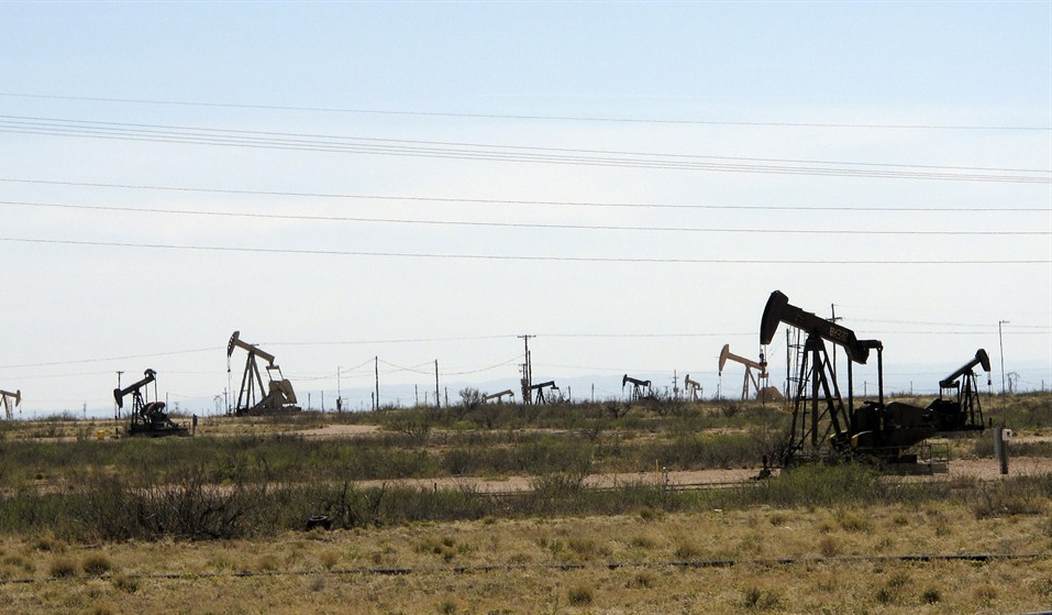This White House must get down on their knees and thank whatever Babylonian gods they worship when a weekend holiday rolls around. They can slide the shiv in just that quick and hope no one notices in all the hubbub of fireworks or finding a cubby full of blow in the Big House.
Which is precisely what they did this Friday, right before the weekend stretched out to Fourth of July.
A successful conservation effort between land owners and oil and gas industry types that had been working for eleven years was, for all intents an purposes, summarily spiked by Biden’s U.S. Fish and Wildlife Service (USFWS).
They’ve proposed a rule to declare the dunes sagebrush lizard “endangered” under the restrictions of the Endangered Species Act (ESA) and it’s too bad, so sad for the oil industry that the little scamps just happen to live all over the Permian basin.
Eleven years, oil and gas operators and landowners banded together to avert the listing of the dunes sagebrush lizard as endangered under the Endangered Species Act. Then-Interior Secretary Ken Salazar even visited the area to tour lizard habitat outside of Goldsmith.
Now the US Fish & Wildlife Service has announced a proposed rule to list the lizard as endangered under the ESA. The decision serves as the 12-month finding on a petition to list the lizard and satisfies a court-ordered deadline to deliver the finding to the Federal Register by June 29, 2023.
…Commented Ben Shepperd, president of the Permian Basin Petroleum Association, “We are shocked and dismayed at this decision. Unfortunately, announcing this before a national holiday is yet another tactic this administration likes to use.”
…More than 3 million acres of lizard habitat in Texas and New Mexico is enrolled in conservation agreements and efforts to protect the lizard have been working for over a decade, Shepperd continued. “Unfortunately, the Fish and Wildlife Service refuses to acknowledge its success.”
There had been absolutely no indication from the FWS that the decision was imminent, he said. In fact, the conservation plan had been modified, updated and approved by the service in January 2020, part of a process he said is part of a continual effort to modify and improve conservation efforts.
For over a decade, everyone in the Basin thought they had a deal, and suddenly, smirky, snekky Biden types be all…
The USFWLS announcement, oozing with concern as it is for the special reptilian inhabitants of millions of acres of desert scrub, expresses in no uncertain terms who they’re aiming the action at.
…According to the USFWS, the lizard is a rare species found in West Texas and in southeastern New Mexico, a region known as the Permian Basin.
The USFWS wrote in a statement that the primary threats to the lizard include “loss of habitats associated with oil and gas development, sand mining, and climate change.”
The uber villain, existential threat of threats “climate change,” but mostly oil and gas development, which is, co-incidentally, their favorite whipping boy for causing “climate change.” See how this works?
A West Texas representative is already boiling mad.
…Rep. August Pfluger (R-TX-11), whose district includes a large portion of West Texas, issued a statement blasting the decision by the Biden administration, saying it was politically motivated.
“The radical Biden Administration cannot help themselves. Over the 4th of July weekend, they’re spending their time attacking the oil & gas industry by listing the sagebrush lizard as endangered,” Pfluger wrote. “Biden is weaponizing a lizard against the livelihoods of Texans, an entire industry, and our nation’s energy security — while tainting the intent of the Endangered Species Act (ESA).”
To quote Sen. @TedCruz: "It's our lizard and they make darned fine boots.” https://t.co/nWpNqH1YTG
— Wayne Christian (@ChristianForTX) July 6, 2023
To be fair to all parties, this a really evenhanded primer on the lizards themselves. The poor little guys – they are only a couple inches long, so not boot material – just happen to be a niche population (sub-species) of a pretty common relative, who chose to live in unconventional lizard habitat.
…The dunes sagebrush lizard (Sceloporus arenicolus) is one of seven species of “spiny lizards” that reside in Texas, and it by far has the most limited distribution of the group. In fact, this species of lizard has the second-smallest range of any other lacertilian in the United States. This variety can only be observed in and around the Monahans Sandhills region of West Texas within five counties: Andrews, Crane, Gaines, Ward and Winkler and the adjacent Mescalaro Sands region of southeastern New Mexico.
However, the dunes sagebrush lizard does not reside throughout these sandhill regions. Typically it will avoid areas of open dunes, choosing to dwell on dunes littered with shin oaks and sagebrush (hence the common name.) It is under these diminutive trees that this lizard will take refuge from the intense heat, as well as predators. Many are spotted as they scamper from one bush to the adjacent one.
And be danged if I could find a population estimate other than the one in the article.
You know the Biden anti-oil fascists have been salivating, looking for a shot at doing anything to disrupt the Permian. It’s very flourishing and fruitful existence must eat away at their nap times and doing lines..
The Permian Basin is an oil-and-gas-producing area located in West Texas and the adjoining area of southeastern New Mexico. The Permian Basin covers an area approximately 250 miles wide and 300 miles long and is composed of more than 7,000 fields (best represented in Railroad Commission of Texas production figures as districts 7C, 08, and 8A) in West Texas. Various producing formations such as the Yates, San Andres, Clear Fork, Spraberry, Wolfcamp, Yeso, Bone Spring, Avalon, Canyon, Morrow, Devonian, and Ellenberger are all part of the Permian Basin, with oil and natural gas production depths ranging from a few hundred feet to five miles below the surface. Other areas within the greater Permian Basin include the Delaware Basin and Midland Basin. The Delaware Basin includes significant development in the Bone Spring and Wolfcamp, together known as the Wolfbone. The Midland Basin includes significant development in the Spraberry and Wolfcamp, together known as the Wolfberry. Recent increased use of enhanced-recovery practices in the Permian Basin has resulted in a substantial impact on U.S. oil production.
Because of the Permian Basin, Texas not only receives an enormous economic benefit but also helps provide energy security for the country.
The greater Permian Basin accounts for nearly 40 percent of all oil production in the United States and nearly 15 percent of its natural gas production, according to the Federal Reserve Bank of Dallas.
And there’s significant potential growth simply from the Delaware Basin. In 2018, the U.S. Geological Survey estimated that the Delaware Basin in West Texas and Southern New Mexico has the potential to produce 46.3 billion barrels of oil and the potential to produce 281 trillion cubic feet of natural gas.
FORTY PERCENT OF ALL U.S. OIL PRODUCTION, FIFTEEN PERCENT OF NATGAS
#NaturalGas production in the #PermianBasin also reached a new annual high in 2022, averaging 21.0 billion cubic feet per day (Bcf/d), primarily from associated natural gas produced from oil-directed drilling. #TxEnergy pic.twitter.com/S14oCGyhQX
— TIPRO (@T_I_P_R_O) July 6, 2023
Permian natgas was due to ramp up 3Q of this year, too, with new plants in the basin coming online.
With five new gas plants scheduled to come online by the end of 3Q23 and another four plants in the fourth quarter, the Permian Basin will add around 2 bcf/d of gas processing capacity by the end of the year which could increase propane supplies out of the region by up to 60-80… pic.twitter.com/u8cBEtELmZ
— RBN Energy (@RBNEnergy) July 6, 2023
If they can use something as simple as a lizard no one ever paid attention to to cripple oil and gas production – and future projects – in one of, if not the most productive areas in the country, they are well on their way to spiking prices through the roof as well as strangling supply.
WIN-WIN and not one of them will be able to name the lizard in 3 years’ time.
I know they think this is gonna work out great.







Join the conversation as a VIP Member